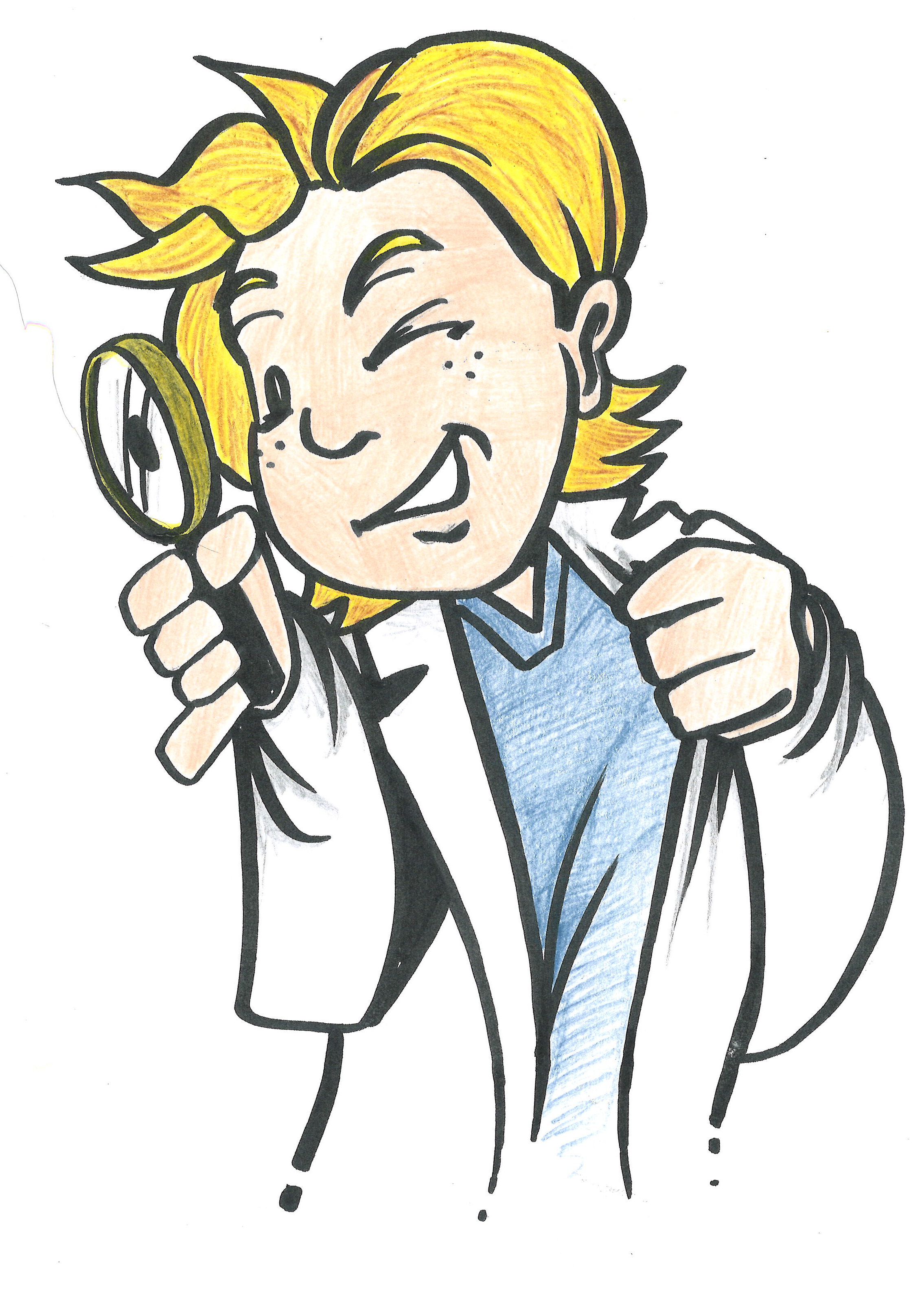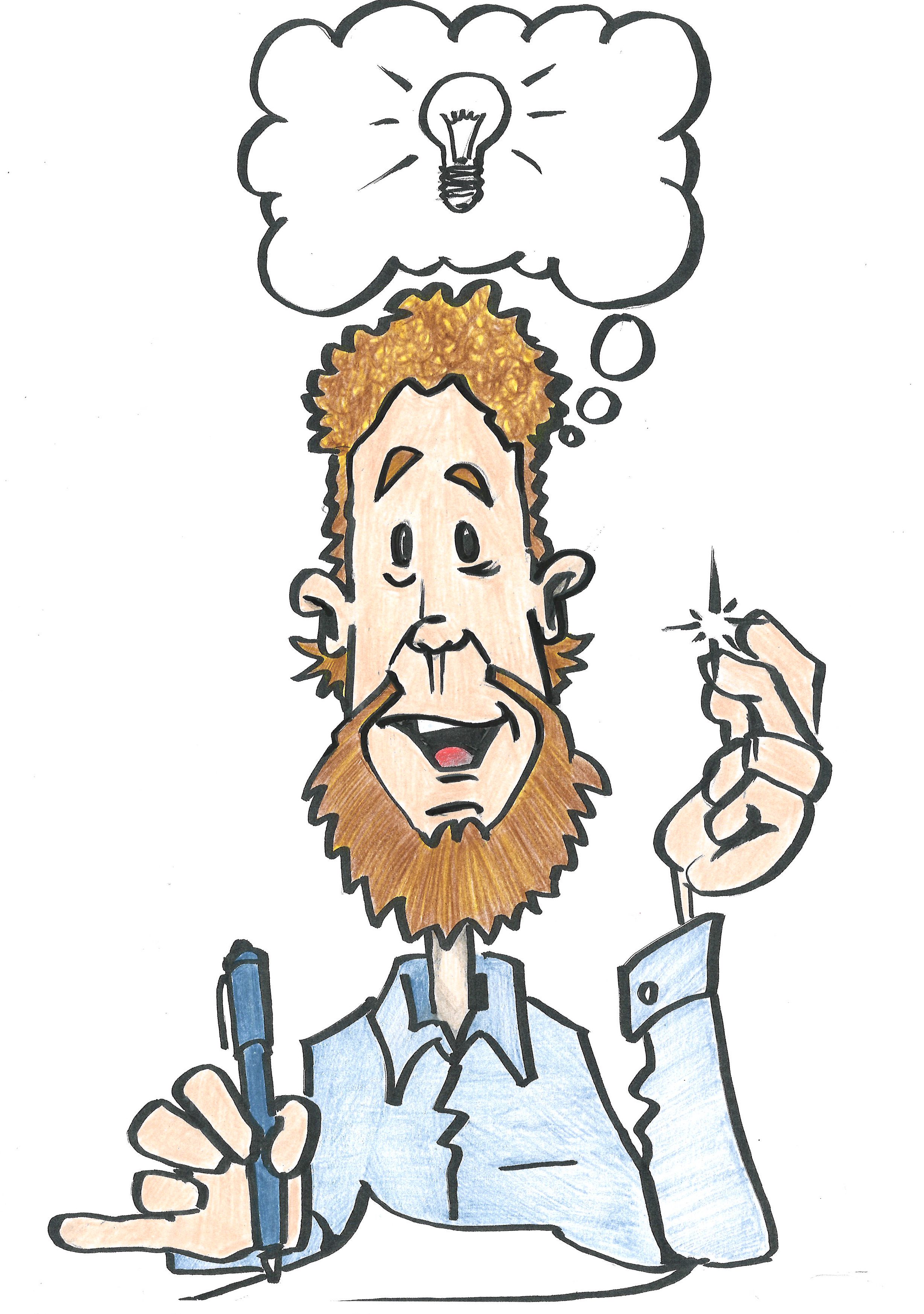
Above anything else, scientific writing has to be precise and accurate. But it’s not an easy task to write precisely about complex topics. Here, you will find a general strategy how you can achieve precision in your writing, and 12 concrete tips how to avoid ambiguity and increase clarity and accuracy of your scientific texts.
Scientific writing is technical in its nature, so its main property should be precision and accuracy. We need to convey our findings clearly and accurately, so that our readers — mostly our fellow researchers — can understand *exactly* what we did and found out, and what the findings mean.
However, writing precisely and without ambiguity about complex topics is not easy. We might struggle to put our thoughts on paper and to find the right words for the ideas we have in our head.
Even if we manage to come up with a text that sounds clearly and precisely to us, our readers might still perceive it as ambivalent or even incomprehensible.
So how can we overcome the difficulties and write clearly and precisely?
Strategy for precise scientific writing
In my experience, there are three main aspects to consider when you want to write precisely:
I. Think precisely -> write precisely
It’s not possible to write precisely when your mind is distracted and foggy or when your thinking about the topic is not developed enough (yet). Therefore, a first step to precise writing is clarity of your thinking.
Here I don’t mean to think abstractly, rather to utilize writing as a support for your thinking. This helps you think more clearly and precisely: to notice gaps and errors and playfully discover the precise words for your ideas.
As a writing method, I highly recommend focused freewriting, where you set a timer and write down everything that comes to your mind about a topic or question, fully focused on the content.
To develop clear thinking around a complex topic, it’s best to (free)write repeatedly on this topic. Such regular think-writing practice can be incorporated into your daily work routines in form of a lab book or research journal.
II. Revise for precision

The biggest mistake you can make when striving for precision in (scientific) writing is trying to get your writing precise already in the first draft. Such an effort typically slows down the drafting substantially and may even lead to a writer’s block.
A much better strategy is to separate the processes of drafting and revising, focusing fully on the content as you draft, and improving the clarity and precision in the next steps of revision.
But even as you revise: don’t start with revising for precision! It’s best to progress from the so-called higher-order concerns (content and macrostructure) towards the lower-order concerns (language and style, including precision).
III. Utilize (peer) feedback
After several rounds of revisions you might still wonder whether your text is really clear and accurate. And even if you think that your text is written precisely, there might be still some gaps and inaccuracies.
It can be hard to catch those, because of a cognitive bias called the curse of knowledge: our brain is quick to fill those gaps and imprecisions in our writing, but our readers might not possess the necessary background knowledge to do so as well.
If you want to proceed faster with your revisions and achieve better results, ask for feedback on your text. Ideally obtain feedback from at least two persons: one that is knowledgeable about your topic (probably because they work on the same or a similar topic) and one that doesn’t know about the specifics of your topic (but they are researchers in the same or a related field).
You can find peers for reciprocal feedback in our Facebook group dedicated to academic peer feedback.
12 tips for more clarity and accuracy in your scientific writing
So what should you watch out for when you are revising your text for precision?
- Use simple sentence structures
Long and complex sentences make it hard to understand the relationships between the concepts and objects in the sentence. Example:During chronic infections, via some mechanism which is not yet understood completely, it is possible for a subset of IgM memory B cells in conditions of low clonal competition to trigger mature B cells to undergo cycles of affinity maturation.
Revised:
During chronic infections, a subset of IgM memory B cells can trigger mature B cells to undergo cycles of affinity maturation. This happens under conditions of low clonal competition, though the mechanism is not yet completely understood.
- Use active voice (don’t hide the performer)

Especially in the Abstract and Discussion section, it’s important to state clearly whether the presented result or idea is yours (and introduced in the present text) or whether it has been established (and published) by someone else. Example:A strong correlation was found between above-ground and below-ground biomass accumulation.
Revised:
We found a strong correlation between above-ground and below-ground biomass accumulation.
- Include linking words for signposting
Linking words disclose and clarify connections between concepts and ideas, helping the reader integrate the individual phrases and sentences in a coherent picture already during the first read. Example:Dendritic spikes have also been reported in cerebellar neurons [REF]. These spikes are mediated by calcium electrogenesis and are fundamentally different from the spikes described here.
Revised:
Dendritic spikes have also been reported in cerebellar neurons [REF]. However, these spikes are mediated by calcium electrogenesis and are therefore fundamentally different from the spikes described here.
- Be cautious with pronouns
Pronouns can bring ambiguity into your texts when it is not absolutely clear what they refer to. And that’s almost always the case 😉 Instead, use a more specific pro-form that makes the reference clear. Example:Light-harvesting pigment−protein complexes (LHCs) absorb solar radiation and transfer its energy to reaction centers where it induces charge separation, thereby converting it to chemical energy.
Revised:
Light-harvesting pigment−protein complexes (LHCs) absorb solar radiation and transfer this energy to reaction centers to induce charge separation, thereby converting the radiation to chemical energy.
- Choose words carefully and look up synonyms
There are no true synonyms in English. Even words listed as synonyms in thesaurus have a slightly different meaning or different usage. Example:This figure shows / indicates / demonstrates / illustrates …
To discern these subtle differences, however, one needs a solid grasp of the English language. Reading a lot of research papers is effective in the long run while a little google search can help immediately. For example, here is an article explaining the difference between demonstrate and illustrate.
- Omit unnecessary details

When we strive for clarity and precision, excessive information can be distracting, and as such a barrier to understanding. To decide which details are necessary and which not, we need to clarify first what message we want to convey, and decide about the details accordingly. Example:It becomes increasingly recognized that numerous molecular processes inside living cells are governed by Brownian motion.
Revision:
“It becomes increasingly recognized” might be necessary information if we want to stress that this topic has been developed only recently. If this is not what we want (or need) to stress, then it’s better to delete this phrase. - Include redundant information
In contrast to the previous point, the precision and clarity of our scientific writing can also be improved by including redundant information. This helps your readers understand thoroughly some difficult concepts and it’s a recommended strategy for your main message, especially when it’s a complex one. Example:Ephaptic action potential (AP) transmission is capacitive: there is no transmembrane current flow, but the charge is redistributed on the intra- and extracellular surfaces of membranes [REFs].
The second part of the sentence explains what the term “capacitive transmission” means in this context. Such an explanation might not be needed for physicists, but this article targets biologists, and this redundant information helps them understand better (i.e., more precisely) what is going on.
- Delete unnecessary words
Similarly to unnecessary details, unnecessary words can distract your reader and dilute the message of your writing. Watch out especially for words that convey the same meaning, such as “absolutely essential”. Moreover, the word “very” can be safely discarded in most cases as it tends to weaken your statements rather than strengthen them. Example:It seems possible thatthere might exist a strain of HIV in an individual which is unreactive to all artificial antibodies available. - Use qualifiers to “fine-tune” your statements

Not all qualifiers are unnecessary: when used carefully, they can help you adjust the meaning of words and make your writing more precise. Example:At least two qualitatively different spikelet types have been observed in …
- In comparisons, always state both objects/concepts that are compared
Yes, this can feel tedious and like not the best style. But precision and brevity are often involved in a trade-off: you can’t achieve them both at the same time. In the case of such a conflict, I suggest to choose precision. After all, we are not reading research articles for pleasure but for the information they provide. Simple example:In contrast, the spikelet waveform is briefer than the AP waveform.
Another example:
The compound has a boiling point similar to water.
Technically, this sentence compares incomparable: boiling point temperature and water. What we mean here, of course, is that the compound has a boiling point similar to the boiling point of water. So to be precise, it’s better to write “The compound has a boiling point similar to that of water.”
But it can get even trickier:
The probe contained more leukocytes than saliva.
The grammatically correct interpretation of this sentence would be this: The probe contained both leukocytes and saliva. The amount/volume of leukocytes in the probe was larger than the amount/volume of saliva in the probe.
But chances are, the author meant something else here. Namely, that the amount/volume of leukocytes in the probe was larger than the amount/volume of leukocytes in the saliva. A more precise statement would be: “The probe contained more leukocytes than what saliva contains.” Or: “The probe contained more leukocytes compared to the amount of leukocytes in the saliva.”
- Avoid strings of nouns
Nouns can also be used as qualifiers. Many scientists love them because they make our writing concise. However, similarly to the previous point, the conciseness comes with the price of ambiguity: strings of nouns as qualifiers don’t represent well the relationships between the qualifiers and the noun they are modifying. Example:Samples from DSEs un-inoculated and inoculated plant roots were stained …
Revised:
Samples from plant roots inoculated and not inoculated with DSEs were stained …
- Avoid garden-path sentences

Garden-path sentences lead the reader down an (interpretation) path with a dead end: these sentences are grammatically correct, yet when read for the first time, they leave the reader confused and in need to read the sentence again to understand it.Simple example: “The old man the boat.” The confusion happens because we interpret every word as we read it, not waiting until the end where the sentence structure would have revealed itself. In this case, we read “man” as a noun and then wonder about the missing verb. Upon second reading, we realize that the word “man” is the verb here (meaning to staff/fill the boat).Garden-path sentences are typically hard to notice as problematic by the author: since I have written the sentence, I am reading it the correct way, unaware of the confusion. But a test reader giving you feedback will easily spot them. Example from scientific literature:One strategy suggested to reduce the seed quality loss caused by heat stress is to change the sowing date to avoid heat stress during seed development and maturation.
Revised:
One strategy how to reduce the seed quality loss caused by heat stress is to change the sowing date to avoid heat stress during seed development and maturation.
These 12 tips help you revise your scientific texts for more accuracy. This will not only make your readers’ job easier, it will also increase your credibility and the impact of your research!
Do you have further ideas how to improve the precision of scientific writing? Please, share them with us in the comments!
Beautifully articulated Martina! Appreciate your writing tips. You got yourself a regular reader!
Thank you, Sarah!
Thank you!
Thank you